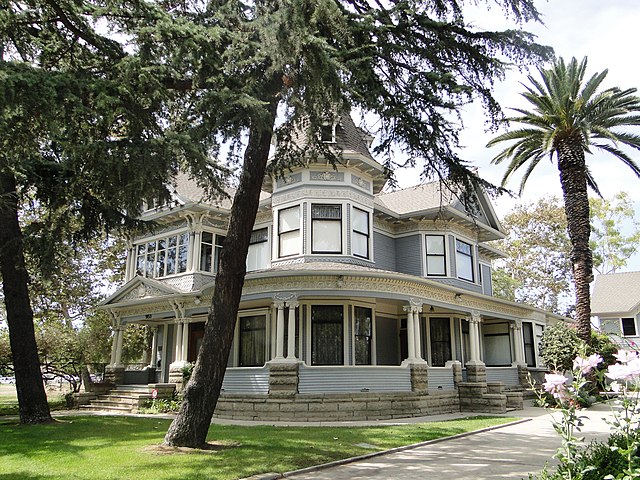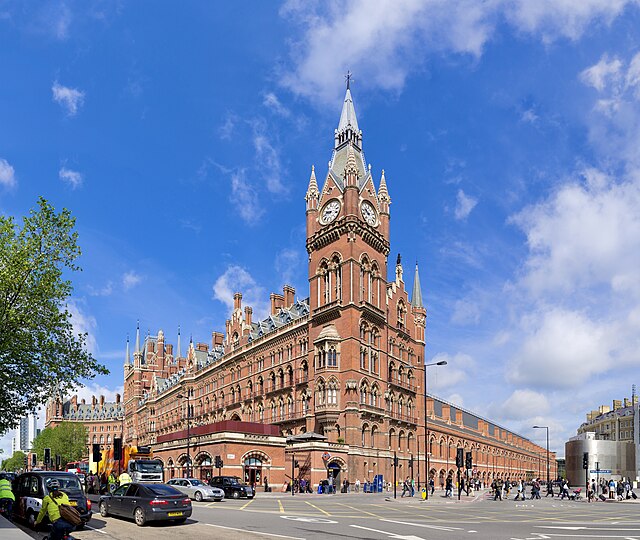Queen Anne style architecture in the United States
Queen Anne style architecture was one of a number of popular Victorian architectural styles that emerged in the United States during the period from roughly 1880 to 1910. Popular there during this time, it followed the Second Empire and Stick styles and preceded the Richardsonian Romanesque and Shingle styles. Sub-movements of Queen Anne include the Eastlake movement.
The Carson Mansion in Eureka, California is an example of American Queen Anne style architecture.
James Alldis House in Torrington, Connecticut, built in 1895
Queen Anne style rowhouses in the Adams Morgan neighborhood of Washington, D.C.
Bembridge House in Long Beach, California, built in 1906
Victorian architecture is a series of architectural revival styles in the mid-to-late 19th century. Victorian refers to the reign of Queen Victoria (1837–1901), called the Victorian era, during which period the styles known as Victorian were used in construction. However, many elements of what is typically termed "Victorian" architecture did not become popular until later in Victoria's reign, roughly from 1850 and later. The styles often included interpretations and eclectic revivals of historic styles (see Historicism). The name represents the British and French custom of naming architectural styles for a reigning monarch. Within this naming and classification scheme, it followed Georgian architecture and later Regency architecture and was succeeded by Edwardian architecture.
St. Pancras railway station and Midland Hotel in London, opened in 1868
Selwyn College, Cambridge
Central Hall of the Natural History Museum, London
Palace of Westminster, Neo-Gothic completed in 1870. Designed by Sir Charles Barry and Augustus Pugin








